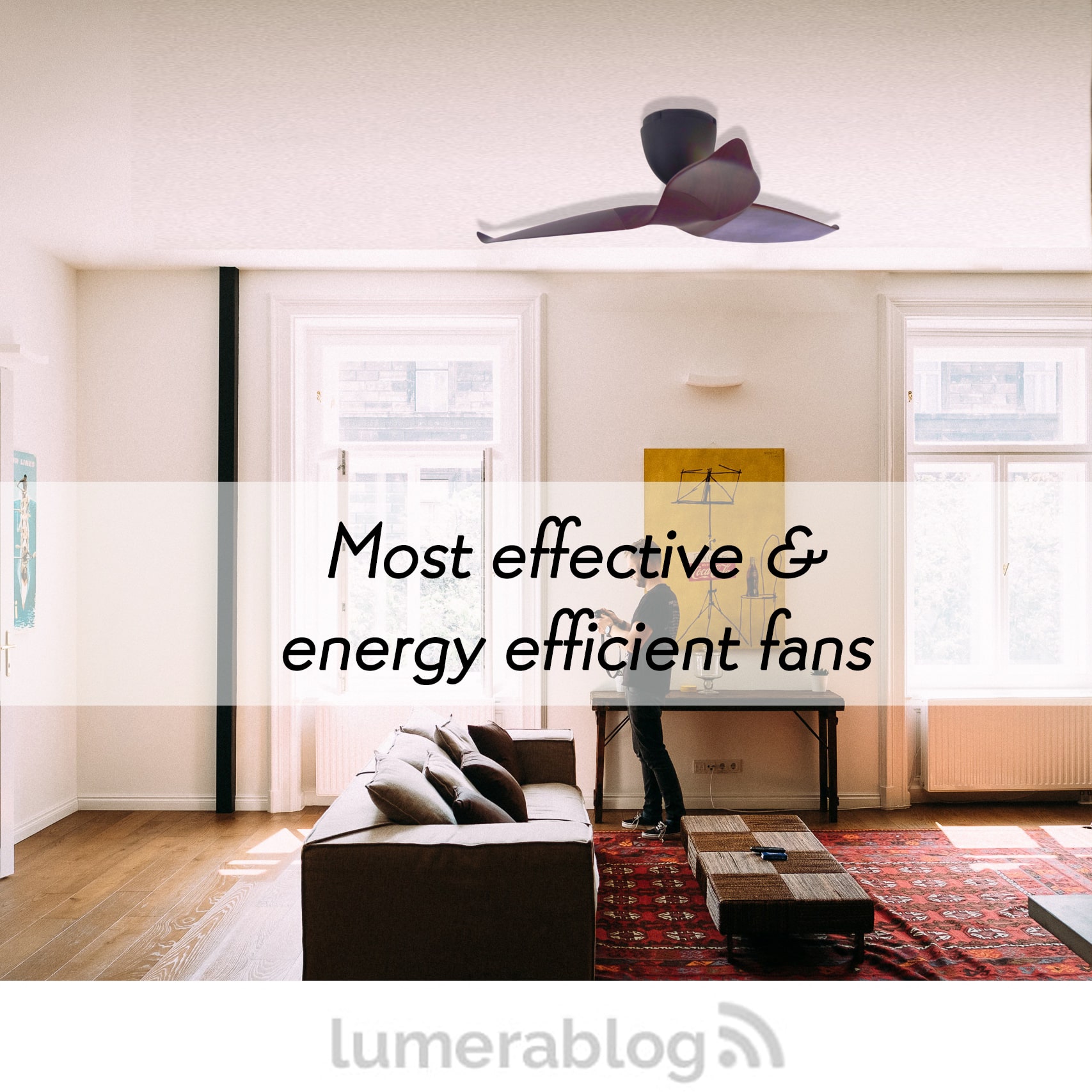All ceiling fans are considered to be extremely energy efficient, although of course some are slightly more energy efficient that others. DC fans in particular have an incredibly low power consumption. Most DC models use no more than 35W when on the highest speed which can make them extremely cost effective.
Even a standard AC fan uses an average of 60-100W. If you think about it, 60W is the equivalent of some regular incandescent light bulbs!
In the summer, on most days your ceiling fan will be enough to cool you down to make It a comfortable living environment. They are so efficient that they are also popular for keeping on overnight. On those high thirty to forty degree days air circulation may not be enough. In order to resume reducing your electricity bills use your ceiling fan in conjunction with your air conditioning and you’ll continue to save especially in the long term. The less you have to rely on your air conditioner, the less your bill will be. Therefore, think about a ceiling fan as an investment.
Curious to know which fan is without a doubt the one that consumes the least amount of energy?
It’s the Aeratron DC Ceiling fan, with an architectural, lightweight design and extremely energy efficient DC motor. With the 4 different models available in several colour combinations the highest power use on the highest speed is a mere 18W!
When looking at effectiveness, it is not the power consumption that you should compare, it is the airflow. This measurement is commonly listed on our sites in cubic metres per hour (m3/hr). The higher the airflow the more air the fan will have the ability move.
Efficiency can also be determined when looking at these figures as you may come across some models that have a higher wattage but lower airflow than others.
Another important consideration is the amount of area a selected fan will cover. A common misconception is that the higher the airflow the further out the movement of the fan can be felt. This isn’t actually the case. The blade span alone will determine how much of your space will be covered. For example, in a large space a larger blade span is generally necessary in order to cover a wider portion. Alternatively, if you will be sitting directly under the fan even in a large area then perhaps a 52” will suffice. This is all based on personal preference.
To have the most effective performance take notice of how low the fan will actually drop. The Australian regulations require that from the floor to the blades of the fan there be at least 2.1m. The lower the fan sits the more you’ll feel the airflow. If your ceiling height is higher than 3m then you may want to consider purchasing an extension rod.
Want to calculate the specific running cost?
There’s only a few simple steps that need to be followed.
Step 1: Find out how much you are currently paying per kilowatt hour (kWh), for peak rate electricity.
Step 2: Divide the ceiling fan wattage you’re considering by 1000 to calculate the equivalent in kWh.
Step 3: Multiply the input power in kW by the price of electricity per kilowatt hour.
Step 4: Multiply this with the hours of intended use per day.
Step 5: Then multiply the answer by the number of days of intended use in a year.

